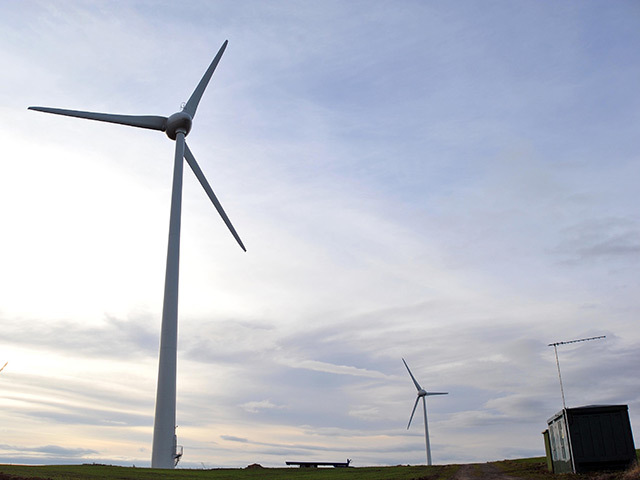
The Scottish Government has refused planning consent for a controversial windfarm proposed for the edge of the Cairngorms National Park.
Deputy First Minister John Swinney concluded that the 31-turbine Allt Duine plan, for the Monadhliath Mountains near Kincraig, did not represent “sustainable development.”
He said it would result in “significant and unacceptable landscape and visual impacts on the park.”
Objectors are celebrating the decision, which had been awaited for more than two years following a public inquiry and consultations on the potential impacts of the £120million scheme on both the park and on new planning policy.
Mr Swinney said: “Our policy on windfarms strikes a careful balance between maximising Scotland’s huge green energy potential and protecting some of our most scenic landscape and wild areas.
“We have been clear that windfarms can only be built in the right places and planning policy sets out rigorous steps to ensure they are sited appropriately and sensitively.”
“I have refused permission as the proposal would have a significant and unacceptable landscape and visual impacts in the local area, including on the Cairngorms National Park and on a wild land area.”
He added that the government remained fully committed to a 100% dependency on renewables for Scotland’s electricity needs by 2020.
Broadcaster and writer Cameron McNeish, who lives in the area, said: “I’m absolutely delighted.
“A couple of years ago I had discussions with (former First Minister) Alex Salmond about ‘wild land’ and he made a promise then that it would be much more difficult for windfarms to be approved in wild land map areas.
“This is the third or fourth to be refused permission because of the effect it would have on the land.
“Allt Duine was far too close to the national park boundary. Approving it would have set off a precedent that would have meant that the national park could be surrounded by windfarms.”
Chris Townsend, a spokesman for the Save Monadhliath Mountains campaign, said: “This is a victory for common sense. It was the wrong development in the wrong location.
“When the application was lodged, five years ago, it was pushing the boundaries of plausibility. With national planning policy dramatically changing over that 2,000-day period, it was clear that only one sensible conclusion could be drawn.
“The thousands that support our campaign thank Mr Swinney for injecting a much needed dose of reality back into the determination process.”
Mike Parker of the applicants, RWE Innogy, said: “We are extremely disappointed. We believe we have designed a windfarm that is appropriate for the area in terms of the location, number and size of the turbines.
“This is verified by the fact that we now know the (inquiry) reporter recommended the application should be consented.
“At a time when the industry is under fire from the UK Government, it is increasingly damaging that this decision has been made.”
He said the company was “directed” to the location in 2006 by identification of the site within Highland Council’s “preferred areas” for large scale onshore windfarms and that its preferred area status had not changed since the application was submitted.
Mr Parker added: “We need a clear policy and regulatory framework that provides certainty for international and domestic investors to take good, long-term decisions about investing in renewable energy projects in the country. Today’s decision has been very frustrating for everyone who has invested time and energy in the project.”
He said the company would consider the findings further before deciding “next steps.”
The project had promised a community investment fund of up to £465,000 per year.
